The idea of a cashless society is no longer science fiction. Getting a cab, paying your water bills, or even buying food from a street vendor is possible without cashless transactions.
People are spending more with credit cards, debit cards, and mobile payments—so much so, the volume of cash being used in the UK dropped by 60% in 2020.
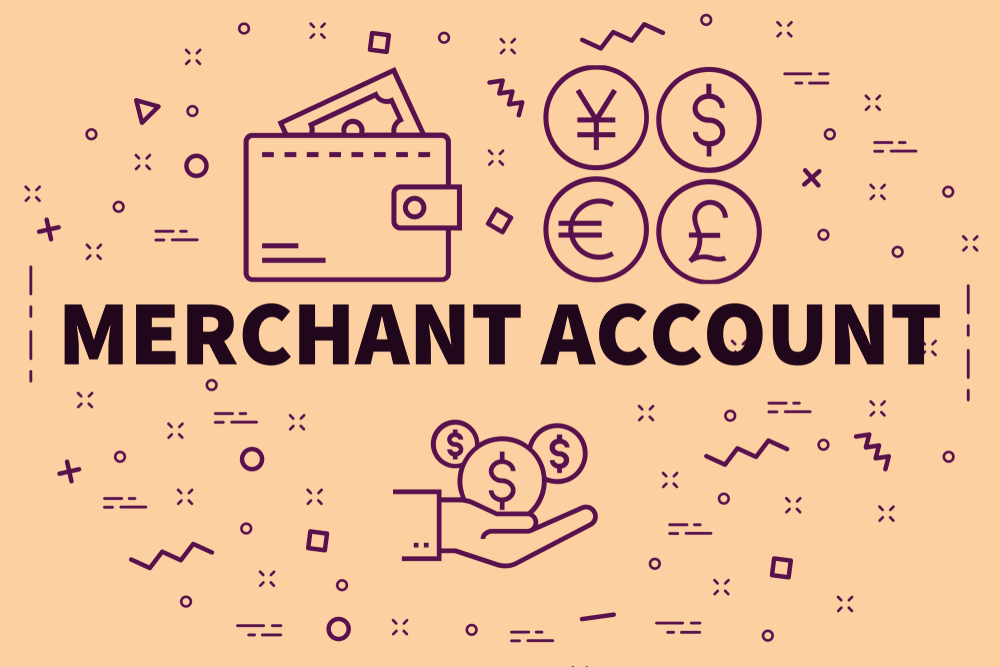
If you’re a business owner who doesn’t accept electronic payments, then you’re missing out. But accepting electronic payments isn’t always as simple as buying a card reader.
You need to set up a merchant account, sign an agreement with a payment service provider, and navigate the complex world of fees, tariffs, and charges before you start accepting credit card transactions.
Confused? Unsure where to start? Don’t panic. This guide shares how a merchant account works, the fees associated with opening one, and how to choose a provider.
- What is a merchant account?
- How does a merchant account work?
- How much does a merchant account cost?
- When do I need a merchant account?
- How to open a merchant account
- Five merchant account providers to consider
What is a merchant account?
A merchant account is a type of bank account that allows a business to receive cashless and electronic payments. (Think credit cards, debit cards, and mobile payments.)
Firstly, the customer pays for their product or service. Once the transaction is cleared by the card companies, it goes into the merchant account—a type of holding account for your business’ money. Those funds are automatically transferred to your main account within a few days.
How does a merchant account work?
While each merchant account type functions differently, the process for taking payments from your customers remains largely the same:
- The customer pays for a product or service. This usually happens via an electronic device, such as a card reader, scanning a QR code, or physical payment terminal.
- The merchant account provider processes transaction details. They contact the card issuer (credit card processor) for verification of funds and approve the transaction.
- The transaction goes through. If the approval goes through and the card has sufficient funds, then the transaction is approved. The money is then sent to the merchant account.
- The merchant account fronts your business and the proceeds to your business account or financial institution. Minus all transaction fees, which can depend on the type of business you run and the contract you signed.
- You get paid. The funds are automatically transferred from your merchant account to your business account. This can take between two and 14 business days, depending on your provider.
Types of merchant accounts
Every business is different. These differences mean varying risk for the service provider—and, you guessed it: merchant accounts with fluctuating rates and fees.
Let’s take a look at the different merchant account types on offer:
- Retail Merchant Accounts: Got a store in a fixed location? This is the account for you. These merchant accounts often come with lower setup and transaction fees.
- Internet Merchant Accounts: If your business is primarily online, then you probably won’t need a card reader to process transactions.
- Telephone Merchant Accounts: If your business accepts orders by phone, then you’ll need a special telephone account.
- Mail Merchant Accounts: Some companies still do business by mail. Customers place orders via a form and include their credit card number. In that case, you’ll need a mail merchant account.
Merchant accounts for ecommerce businesses
If you’re running an ecommerce business, there are other merchant accounts available to you. These include:
- Offshore Merchant Accounts: An offshore merchant account, or international merchant account, can have certain benefits and tax discounts for international businesses.
- High-risk Merchant Accounts: Depending on your merchant category code, you might have to apply for a high-risk account. This is for businesses that may have a large number of chargebacks or a higher risk of non-settlement.
- Third-party Merchant Accounts: Using a third-party merchant account that connects to the secure payment gateway, such as PayPal, can be the easiest way for ecommerce business owners to get started.
Aggregated merchant accounts vs. dedicated merchant accounts
You might see the terms “aggregated” and “dedicated” crop up during your search for a merchant account. The difference between the two is the level of control you have (or need) over your business’ money.
An aggregated merchant account combines income from several businesses in one account. You can’t see other businesses’ financials, but it’s the less complex option. Companies like PayPal and Stripe offer this type of service to businesses looking to get up and running with one in a few days. The downside? Payments tend to take longer to process.
A dedicated merchant account, on the other hand, is created exclusively for your business. Payments get processed faster and fees are negotiable, but it takes more time to set up. Consider this option if you are (or are soon to be) processing millions each year.
How much does a merchant account cost?
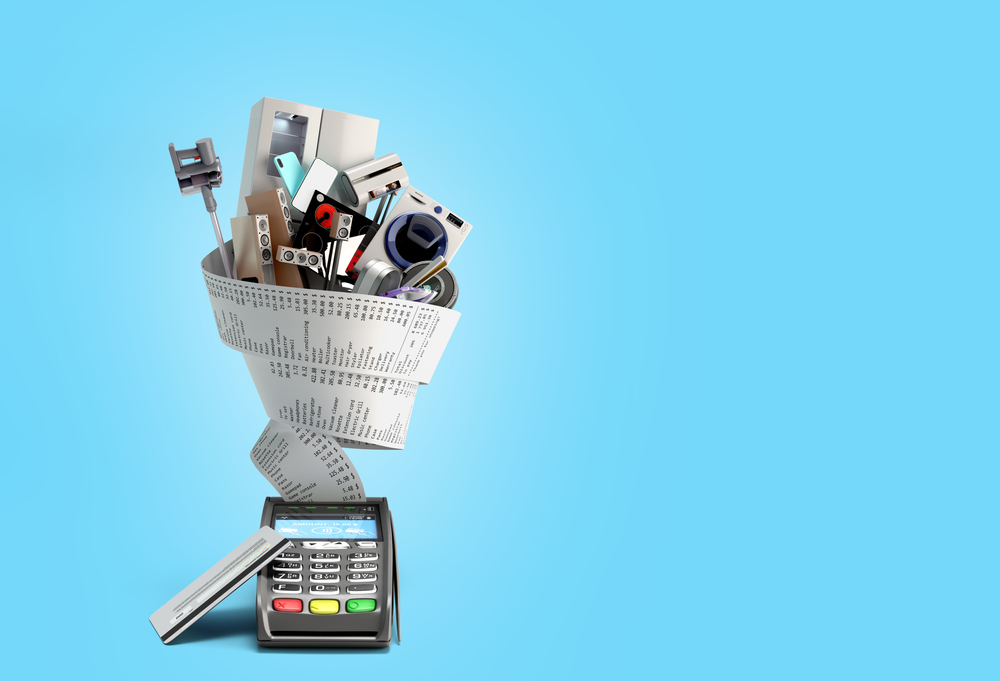
Now, we know what you’re thinking: Just how much is this all going to cost me? The short answer is, it depends. When a merchant service provider fronts your business, they’re taking on a certain amount of risk—so they charge additional fees.
Do your due diligence and read through contracts carefully before you sign anything. It’s important to know exactly what you’re paying for when you get a merchant account.
- “The important thing is to understand the contract lengths, fees, and various pricing structures you may need to sign up to, but it’s a competitive market and there are some great signing-on incentives for new customers.” —Richard Parris, Managing Editor of Startups.co.uk
Pricing models
Interchange plus pricing
This works by charging the merchant a percentage of the transaction (known as the interchange rate) and a fixed per-transaction fee (plus). For example, an interchange-plus transaction might be charged at 2% plus £0.20 per transaction.
It’s considered a very fair and transparent way of pricing. But unless you’re a financial expert, interchange plus pricing can make bank statements tricky to understand.
Tiered pricing
With tiered pricing, merchant account providers classify debit card transactions into one of three tiers:
- Qualified, i.e., in-person with a physical card
- Mid-qualified, i.e., online or via telephone
- Non-qualified, i.e., to be settled later or risky purchase
If a transaction is online, keyed in via telephone, or to be settled at a later date, the risk of non-settlement goes up. And as the risk goes up, the fees go up.
Flat-rate pricing
Opting for flat-rate fees when negotiating your contract can be a simple way to avoid these complexities. It’s commonly used and appropriate for small businesses that might have a lower sales volume. You get a simple, predictable bill when operating your merchant account.
Setup fees
Setup fees are complicated. Almost every merchant service provider offers quote-based pricing, meaning you’ll have to inquire directly to get a price.
Providers look at your anticipated monthly sales, any point-of-sale system (POS) requirements, and merchant category code—the latter of which is important to assess risk. A casino would be perceived to have a higher non-settlement risk than a supermarket, for example.
You’ll also need to provide financial records, business bank account details, and any other supporting information a provider might need when applying.
Cost: Set-up fees can range from £0 to £99.
Transaction fees
If your merchant account provider charges to process transactions, expect fluctuations in your bill. The fees you pay per transaction will depend on a lot of factors, such as:
- Card issuers
- Merchant category code
- Payment network
- Assessment fees
- Type of transaction
- Type of card (credit vs. debit)
- Customer location (EU or non-EU)
“Credit card processing fees can add up pretty quickly when using a merchant bank account, especially for small businesses that might not be receiving high order volumes and could feel the impact of these fees more acutely,” says Stephen Light, co-owner and CMO of Nolah Sleep.
“Encouraging customers to pay with cards in person can be helpful in lowering these costs, but that’s obviously impossible for strictly ecommerce stores.
Cost: Fees can range between 0.29% and 3.5% per transaction.
Maintenance fees
To use your merchant bank account, you usually have to pay a monthly subscription—also known as a service fee.
Expecting to be below a certain sales threshold? Many providers have a monthly minimum fee. Even if you don’t hit the volume of credit card payments you expected to that month, you’ll be hit with a usage fee.
Cost: Maintenance fees range from £0 to £99 per month.
PCI fees
PCI (payment card industry) is a set of security standards that ensures companies and merchants store credit card information in a secure manner.
There are four levels of compliance that vary depending on how many ecommerce transactions you run per year:
Merchant service providers often charge PCI compliance fees to help you stay on top of this. It might seem like an unnecessary cost, but it’s a price worth paying—you might be charged a fee from the processor if you don’t comply with PCI standards.
Chargeback fee
A chargeback fee occurs when a customer successfully disputes a purchase. But dealing with a chargeback isn’t over when you issue a refund. Reversing the transaction and returning the funds isn’t free. You’ll be charged a fee to cover processing costs.
When do I need a merchant account?
Businesses without a merchant account are stuck with using cash, which can be a security risk and can turn away potential customers. Having large amounts of cash on premises can make your business a target for criminals.
Ecommerce is soaring—studies predict the market will surpass $7 trillion by 2025. If you want to sell online, there’s no workaround: you need a merchant account. It’s impossible to start accepting payments without one.
How to open a merchant account
Decided to embrace the cashless economy and open a merchant account? Here’s a short checklist of things to look for throughout the process:
- Determine your requirements. Are you going to accept payments in-person or online? Do you need POS systems, hardware, and training? What volume of payments do you expect to receive every month? Merchant account service providers will ask for all of these numbers, so make sure you have them to hand.
- Compare options. Applying for a merchant account can be a lengthy process, and different service providers have different requirements. They all have different offerings, too. Make contact with them and see what they can offer businesses in your situation.
- Be aware of extra fees. A lot of merchant service providers offer long-term contracts. If you’re not sure how business is going, opt for an account with more flexibility.
Merchant account providers offer different services and different packages. For example, some services may (or may not) offer:
- Payment gateway solutions for online payments
- Online shopping carts for ecommerce sites
- Recurring billing for subscription model merchants
- SSL certificates to keep online payments secure
- Virtual terminals for payments made over the phone
- PDQ machines for retail payments
When you get a quote, be sure you understand what’s included and what isn’t. You don’t want to end up paying for services you don’t need.
Five merchant account providers to consider
Once you know what type of account your business needs (and the things to look out for), start contacting service providers for quotes.
There are hundreds of companies that provide merchant account services in the UK. Here are five of our favorites for you to consider.
1. PayPal UK
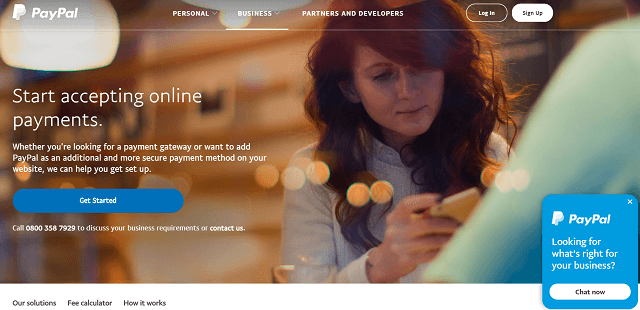
PayPal is one of the most popular online payment processors. It makes online payment simple for customers no matter where they’re based. Plus, customers don’t have to leave your website to make the payment.
- Low fees of 1.9% plus 20p per transaction.
- 416 million people who already have a PayPal account won’t need to re-enter their card details or shipping address when purchasing through your store.
- Offer Pay in 3 at no additional cost, meaning customers are 57% more likely to make a purchase.
- PayPal is compatible with Zettle Card readers, Apple, Samsung, Google, and QR code payment methods.
2. Worldpay
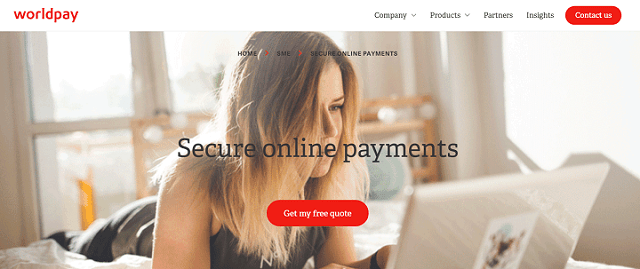
Worldpay is one of the largest global payment processing platforms out there. It’s estimated that 42% of card payments in the UK alone go through its platform, making Worldpay the UK’s leading merchant service provider.
Pros
- No joining fee.
- Different pricing plans are available depending on your needs, including custom quotes.
- In-store, online, mobile, and even email payment options are also available.
- Point of sale software to take card payments in-person.
3. Zettle
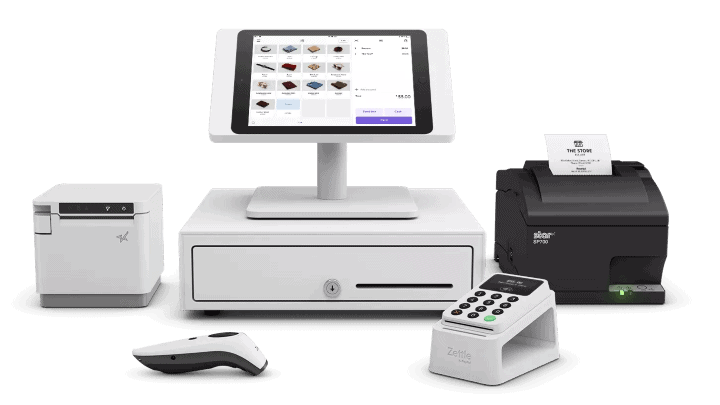
Zettle, formerly known as iZettle, is a well-priced alternative for businesses that want to accept face-to-face card payments only. Some of its advantages include:
- A flat fee of just 1.75%.
- No contracts, monthly fees, or merchant account necessary.
- Accepts a wide variety of UK cards, including American Express, JCB, and Apple Pay.
- Mobile card reader is available from just £19, and it’s compatible with PayPal.
4. Stripe
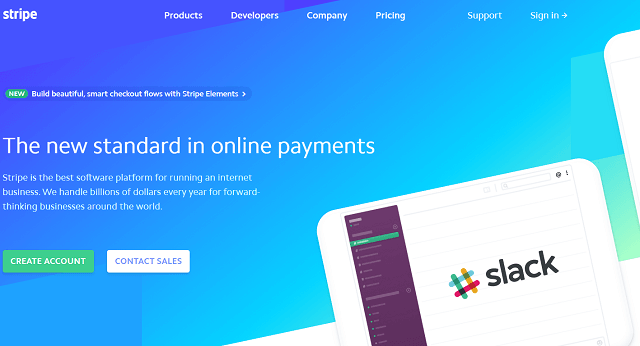
Stripe is a popular choice for many merchants and offers a complete commerce toolkit built for developers. It offers advanced functionality for a range of online businesses, especially those in eCommerce and SaaS, and those handling subscription payments.
- 1.4% + 20p transaction fees for European credit and debit cards, and 2.9% + 20p for non-European credit and debit cards.
- Stripe Relay API allows merchants to sell products through Twitter on their mobile devices.
- No monthly fees and transparent pricing structure.
5. Shopify

Not just an ecommerce platform, Shopify now allows merchants to sell both online and offline. It helps business owners by offering turn-key solutions at competitive prices. Just be aware that certain products are prohibited by Shopify. Check you’re cleared to make an account first.
- Credit card fees around 1.6%.
- If you have a Shopify online store, everything is fully integrated automatically.
- Sell offline via Shopify POS—something PayPal does not currently support.
- Buy button, Facebook Shop, and Messenger payment options.
There are a lot of merchant provider options out there, each offering something slightly different. It might feel overwhelming, but it’s worth digging through the options to make sure you’re getting the best deal for your business.
What’s the best merchant account for your business?
Consumers are using electronic payments and digital wallets more, and these trends look set to continue. That means your business needs a merchant account provider to get your share of the profit.
With so many options out there, it’s tough to figure out which one is right for you. But if you’re looking for the merchant account with the lowest processing fees, the lowest monthly fees, and the ability to take payments anywhere, then look no further.
We put together a list of over 100 UK merchant account providers. It’s a great place to start your research. And armed with your knowledge of merchant accounts and service providers, you’ll be sure to get exactly what is right for your business—without breaking the bank. (Literally.)